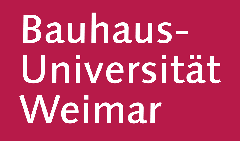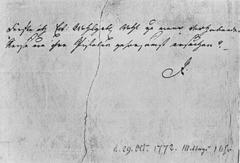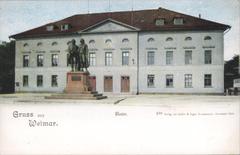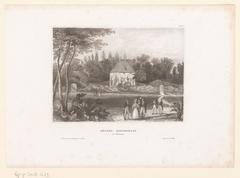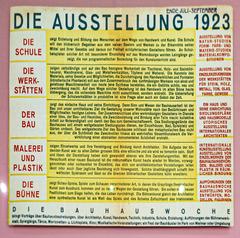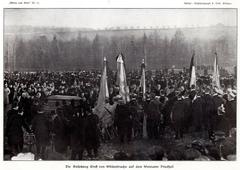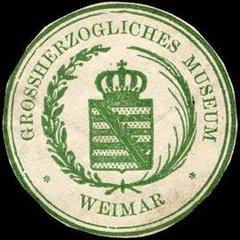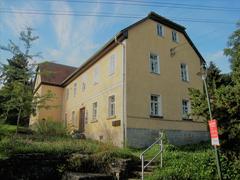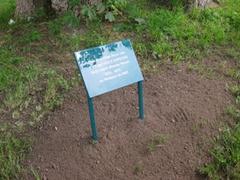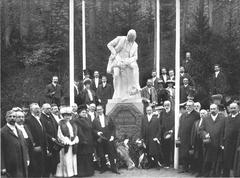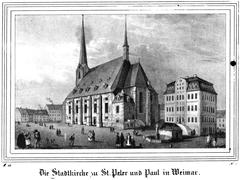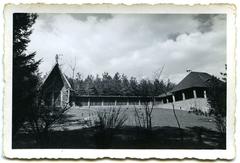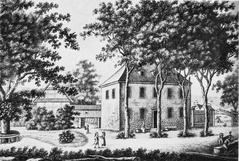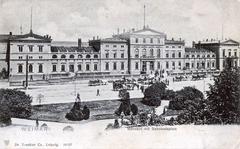Hauptstaatsarchiv Weimar: Visiting Hours, Tickets, and Complete Guide to Weimar’s Historic Archive
Date: 15/06/2025
Introduction
The Hauptstaatsarchiv Weimar, located in the heart of Weimar, Germany, is the principal state archive of Thuringia and an essential gateway to understanding the region’s complex cultural, political, and social history. Established in the 16th century, it preserves an unparalleled spectrum of records, from medieval manuscripts to contemporary governmental documents. The archive is housed in architecturally significant buildings, including the historic Beethovenplatz site and the Marstallstraße complex, both of which are within easy reach of Weimar’s major cultural landmarks. This guide provides a detailed overview of the archive’s history, collections, visiting hours, ticketing policies, accessibility, and practical tips for visitors, making it a valuable resource for researchers, history enthusiasts, and cultural travelers alike (archive-in-thueringen.de; de.wikipedia.org; landesarchiv.thueringen.de).
Table of Contents
- Introduction
- Historical Overview
- Holdings and Notable Collections
- Visiting Hauptstaatsarchiv Weimar: Practical Information
- Architectural and Institutional Milestones
- Frequently Asked Questions (FAQ)
- Conclusion
- References and Further Reading
Historical Overview
Origins and Early Development (15th–16th Century)
The Hauptstaatsarchiv Weimar traces its origins to the 15th century, when the castle in Weimar began serving as a repository for the official documents of the Wettin dynasty. After the Schmalkaldic War in 1547, Weimar became the main residence of the Ernestine line, which consolidated and formalized the archive. This led to the official establishment of the “Gemeinschaftliches Hauptarchiv des Sachsen-Ernestinischen Gesamthauses” (Ernestine General Archive), marking the birth of the Hauptstaatsarchiv Weimar as a central institution for the region’s documentary heritage (archive-in-thueringen.de; de.wikipedia.org).
Evolution Through the Duchy and Grand Duchy Periods (16th–19th Century)
With the unification of Saxony-Weimar and Saxony-Eisenach in the 18th century, and later the elevation to Grand Duchy status in 1815, the archive expanded its holdings and administrative reach. The “Geheimes Haupt- und Staatsarchiv” (Secret Main and State Archive) managed both public and private records, including the Grand Ducal House Archive, which remains an important collection today (weimar.de).
The Weimar Republic and State of Thuringia (20th Century)
Following the end of the monarchy in 1918 and the subsequent formation of the State of Thuringia in 1920, the various archives in Weimar were unified under the “Thüringisches Staatsarchiv.” In the Nazi era, the Marstall complex was used by the Gestapo, a chapter commemorated by the “Erinnerungsort Gestapokeller” (Memorial Site Gestapo Cellar) on site (landesarchiv.thueringen.de).
Post-War and GDR Period (1945–1990)
After World War II, the archive adapted to the reconfiguration of East Germany’s administrative landscape. The Hauptstaatsarchiv Weimar became responsible for the Erfurt district and underwent several renamings, but continued to serve as a central historical archive (de.wikipedia.org).
Reunification and Modern Era (1990–Present)
Following German reunification, the Hauptstaatsarchiv resumed its role as the main archive for the Free State of Thuringia, governed by the Thuringian Archive Law of 1992. In 2016, it became one of the six integrated departments of the Landesarchiv Thüringen, overseeing records for 88 state and federal authorities (archive-in-thueringen.de).
Holdings and Notable Collections
The Hauptstaatsarchiv Weimar is the largest state archive in Thuringia, preserving around 30 kilometers of documents, files, maps, and digital media spanning more than a millennium (de.wikipedia.org). Its main locations are:
- Beethovenplatz: Pre-1920 materials, including medieval and early modern documents.
- Marstallstraße: Records from 1920 onwards, covering the Weimar Republic, Nazi era, GDR, and contemporary Thuringia.
Collection Highlights
- Martin Luther’s Diet of Worms Speech (1521): A UNESCO World Heritage manuscript (landesarchiv.thueringen.de).
- Goethe’s Official Writings: Documents from Goethe’s statesmanship in Weimar.
- Bauhaus Records: Documents from Staatliches Bauhaus Weimar (1919–1926).
- Buchenwald Camp Files: Evidence of Nazi-era injustices.
- Personnel Files: Thuringian ministries (1920–1952), valuable for genealogical research.
- Photographic Collections: Extensive documentation of GDR life and political organizations.
- Additional Materials: Newspapers, gazettes, and non-governmental records (portal.ehri-project.eu).
Digitization projects have made many holdings accessible online through the Archivportal Thüringen and Deutsche Digitale Bibliothek.
Visiting Hauptstaatsarchiv Weimar: Practical Information
Visiting Hours
- Monday–Wednesday: 08:00 – 16:00
- Thursday: 08:00 – 18:00
- Friday: Closed
Summer Schedule (June 30 – August 8, 2025):
- Tuesday & Wednesday: 08:30 – 16:00
- Thursday: 08:30 – 18:00
- Monday & Friday: Closed
Always check the official website for updates or changes before your visit.
Entry and Tickets
- Admission: Free of charge.
- Registration: Advance registration is required for access to reading rooms and archival materials.
- Special Exhibitions: May require tickets or prior booking.
- Guided Tours: Available on request or during special events.
Accessibility
- Both locations are wheelchair accessible; contact the archive in advance for assistance.
- Accessible restrooms and support services are provided.
Getting There and Nearby Attractions
- Addresses: Beethovenplatz 1 and Marstallstraße 1, Weimar.
- Transport: Walking distance from Weimar train station; accessible by local bus lines.
- Nearby Sites: Goethe National Museum, Bauhaus Museum, Duchess Anna Amalia Library, and UNESCO “Classical Weimar” ensemble (UNESCO World Heritage: Classical Weimar).
Special Events and Guided Tours
- The archive hosts occasional exhibitions, lectures, and tours—check the official event calendar for updates.
Photographic Opportunities
- Exterior Photography: Allowed.
- Interior Photography: Requires permission; generally restricted to protect documents.
- Architectural Highlights: The Neo-Renaissance Marstall complex and the 19th-century Beethovenplatz building.
Architectural and Institutional Milestones
The archive operates from two architecturally significant buildings. The Marstall complex, once grand ducal stables, now features state-of-the-art underground storage with climate and security controls (agt-gen.de). The Beethovenplatz site is a prime example of late 19th-century civic architecture. The archive embraces technology, offering digital finding aids and remote research support through the Archivportal Thüringen.
Frequently Asked Questions (FAQ)
Q: What are the Hauptstaatsarchiv Weimar visiting hours?
A: Monday to Wednesday, 8:00–16:00; Thursday, 8:00–18:00; Friday closed. Summer hours differ—see the official website.
Q: Is there an admission fee?
A: Entry is free. Registration and a confirmed appointment are required.
Q: Is the archive wheelchair accessible?
A: Yes, at both locations; contact staff in advance for special arrangements.
Q: Can I take photographs inside?
A: Exterior photography is permitted; interior photography requires permission.
Q: Are guided tours available?
A: Yes, with advance booking or during special events.
Q: How do I request archival materials?
A: Register in advance and submit a research application. Materials can be ordered ahead or with staff assistance on-site.
Q: What are some nearby historical attractions?
A: Goethe National Museum, Bauhaus Museum, Duchess Anna Amalia Library, and the Classical Weimar UNESCO heritage ensemble.
Conclusion
The Hauptstaatsarchiv Weimar stands as a cornerstone of Thuringian and German heritage. With its extensive collections, accessible facilities, and proximity to Weimar’s most significant historical sites, the archive offers an exceptional experience for visitors. Whether you are conducting research, exploring Weimar’s UNESCO landscape, or simply seeking to connect with centuries of history, the Hauptstaatsarchiv Weimar is a destination not to be missed.
For current visiting hours, registration, and event details, please visit the official Hauptstaatsarchiv Weimar website.
Explore Weimar’s history—download the Audiala app for guided tours and follow us on social media for updates on exhibitions and cultural events.
References and Further Reading
- Visiting Hauptstaatsarchiv Weimar: History, Tickets, Hours, and Visitor Guide, 2025 (archive-in-thueringen.de)
- Hauptstaatsarchiv Weimar Wikipedia Entry, 2025 (de.wikipedia.org)
- Landesarchiv Thüringen – Hauptstaatsarchiv Weimar, 2025 (landesarchiv.thueringen.de)
- Hauptstaatsarchiv Weimar Visiting Hours, Tickets, and Historical Insights, 2025 (tharchiv.thueringen.de)
- UNESCO World Heritage: Classical Weimar, 2025 (whc.unesco.org)
- Architectural Details and Visitor Experiences (agt-gen.de)
- Digital Access and Collections (Archivportal Thüringen)
Images for inclusion:
- Hauptstaatsarchiv Weimar historic building
- Map showing Hauptstaatsarchiv Weimar location
- Hauptstaatsarchiv Weimar reading room


